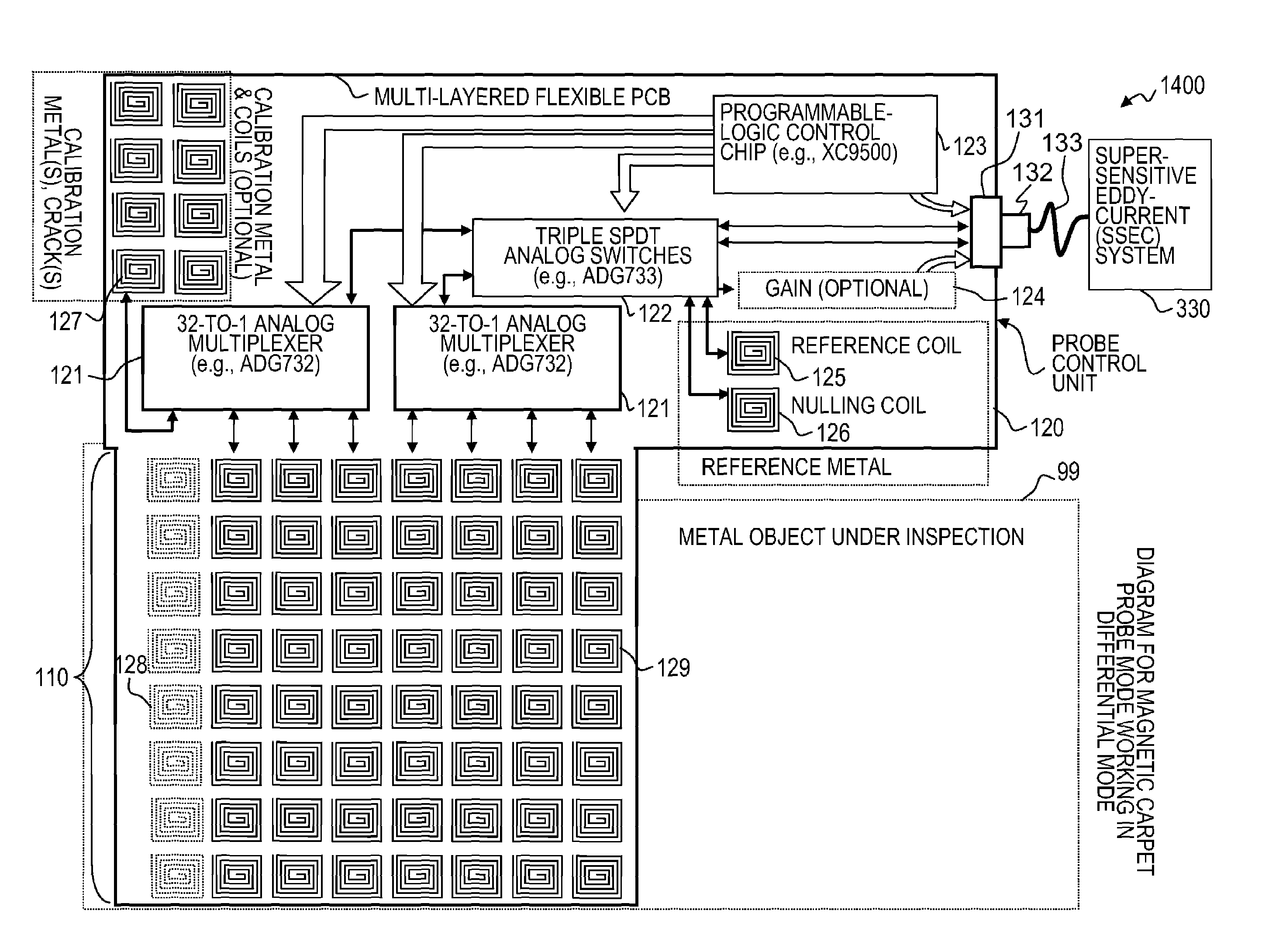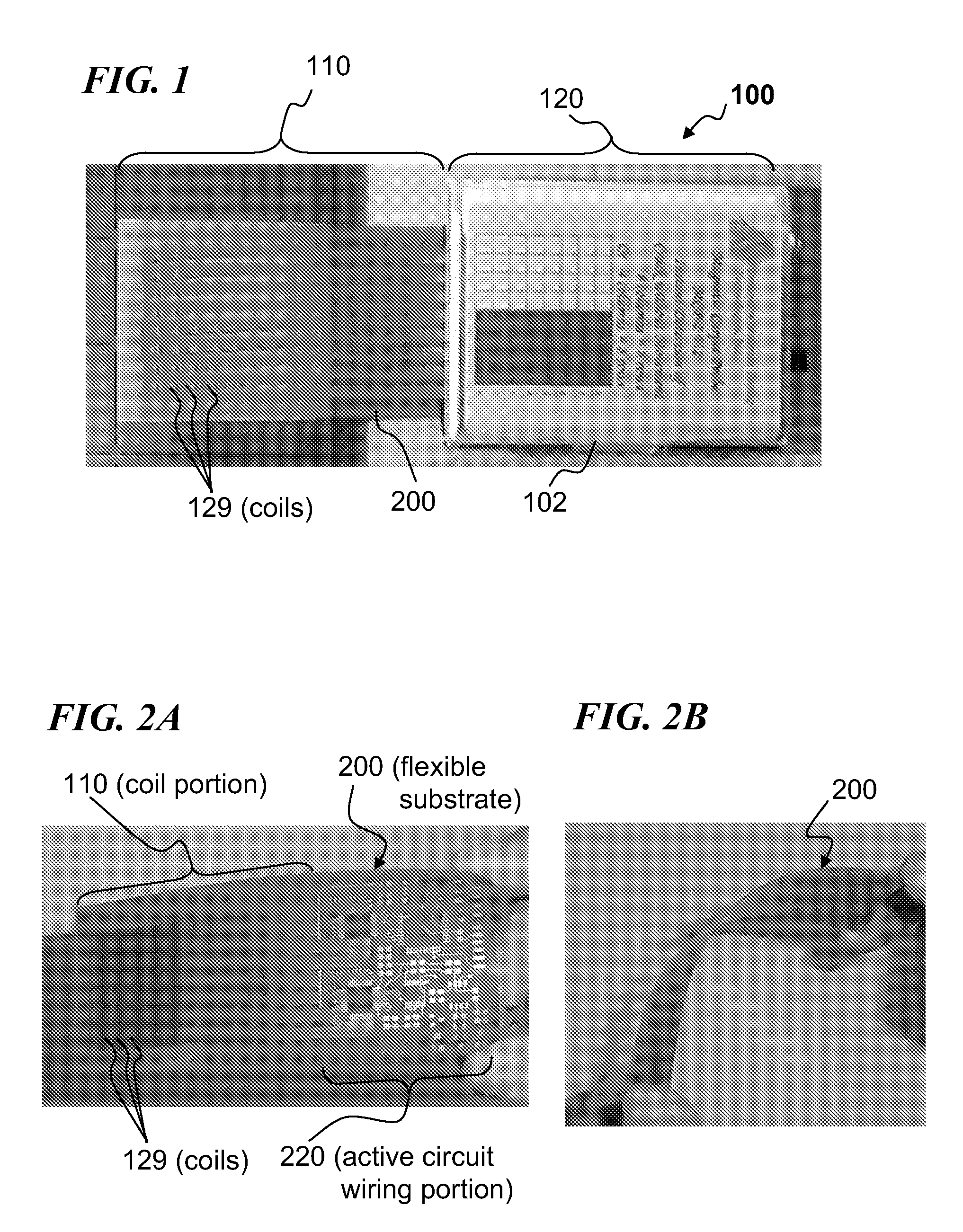Apparatus and method for eddy-current scanning of a surface to detect cracks and other defects
a technology of eddy-current scanning and surface, applied in the field of non-destructive eddy-current testing, can solve the problems of affecting the magnetic field, causing changes to the observed rfec or conventional ec signal, etc., and achieves substantial flexibility in controlling parameters and avoiding mechanical noise
- Summary
- Abstract
- Description
- Claims
- Application Information
AI Technical Summary
Benefits of technology
Problems solved by technology
Method used
Image
Examples
Embodiment Construction
[0034]In the following detailed description of the preferred embodiments, reference is made to the accompanying drawings that form a part hereof, and in which are shown by way of illustration specific embodiments in which the invention may be practiced. It is to be understood that other embodiments may be utilized and structural changes may be made without departing from the scope of the present invention.
[0035]The invention provides methods and apparatuses that can be used to scan an object for an anomaly. Generally, an apparatus of the invention is placed onto a surface of the object to be scanned so that an excitation-sensing unit that is a part of the apparatus is positioned to force an alternating excitation magnetic field into the object. The magnetic field produces conventional eddy currents that can be detected in close proximity to the excitation unit.
[0036]The amplitude and phase of the eddy-current of an excitation-sensing coil will stay substantially equal to the amplitu...
PUM
| Property | Measurement | Unit |
|---|---|---|
| impedance | aaaaa | aaaaa |
| magnetic | aaaaa | aaaaa |
| period of time | aaaaa | aaaaa |
Abstract
Description
Claims
Application Information
 Login to View More
Login to View More - R&D
- Intellectual Property
- Life Sciences
- Materials
- Tech Scout
- Unparalleled Data Quality
- Higher Quality Content
- 60% Fewer Hallucinations
Browse by: Latest US Patents, China's latest patents, Technical Efficacy Thesaurus, Application Domain, Technology Topic, Popular Technical Reports.
© 2025 PatSnap. All rights reserved.Legal|Privacy policy|Modern Slavery Act Transparency Statement|Sitemap|About US| Contact US: help@patsnap.com



